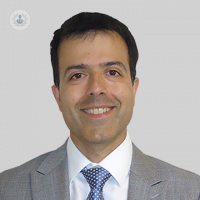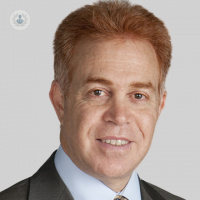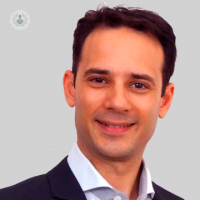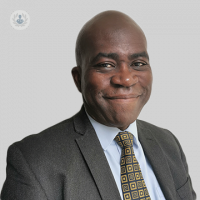What is pinnaplasty?
Ear correction surgery, where the ears are pinned back, is known as pinnaplasty or otoplasty. The cosmetic surgery procedure is used to change the size or shape of the ears, or to pin them back if they stick out. It is usually carried out on children and teenagers but some adults may opt to have the procedure too. Children under the age of five are unable to have pinnaplasty as their ears are still developing and growing.
What happens during a pinnaplasty?
Pinnaplasty is performed under local or general anaesthetic, depending on the age of the patient. The operation usually takes about one to two hours. The surgeon will make a cut to the back of the ear and peel off some skin from the cartilage. The shape of the cartilage is changed so that the ear is closer to the head. The doctor can also correct the symmetry of the ears too. The wounds are then closed with stitches and a dressing is applied.
There is a newer technique known as incisionless otoplasty to treat prominent ears, which involves scoring the cartilage through the ear skin using a needle. No incision is made. There is not a lot of evidence about the long-term quality of this procedure.
What happens after pinnaplasty?
Following surgery, the ears may be sore, tender or numb for a few days and the patient may need to wear a bandage around their head. They will not be able to wash their hair for a few days whilst leaving the dressing on to protect the ears from infection. It is useful to sleep upright for a few nights following surgery.
There may be bruising for a few weeks and it is recommended taking the time off school or work to let these heal. The stitches may come to the surface and cause the ear to feel sore, which can be treated with over the counter pain medications. After 10 days the stitches are removed.
What are the possible complications of pinnaplasty?
Complications are unusual. There can be a collection of blood between the skin and the cartilage, which creates 'cauliflower ear'. On some occasions, the skin may scab and the patient must be very careful with their dressings to ensure that underlying cartilage is not exposed, dried out or infected. If it does dry out then it can cause a misshapen ear and another procedure will be needed to repair the hole with a skin graft. If the area is red, swollen or painful post-operation, this may be a sign of infection and the patient should consult their doctor.
10-05-2023Pinnaplastia
What is pinnaplasty?
Ear correction surgery, where the ears are pinned back, is known as pinnaplasty or otoplasty. The cosmetic surgery procedure is used to change the size or shape of the ears, or to pin them back if they stick out. It is usually carried out on children and teenagers but some adults may opt to have the procedure too. Children under the age of five are unable to have pinnaplasty as their ears are still developing and growing.
What happens during a pinnaplasty?
Pinnaplasty is performed under local or general anaesthetic, depending on the age of the patient. The operation usually takes about one to two hours. The surgeon will make a cut to the back of the ear and peel off some skin from the cartilage. The shape of the cartilage is changed so that the ear is closer to the head. The doctor can also correct the symmetry of the ears too. The wounds are then closed with stitches and a dressing is applied.
There is a newer technique known as incisionless otoplasty to treat prominent ears, which involves scoring the cartilage through the ear skin using a needle. No incision is made. There is not a lot of evidence about the long-term quality of this procedure.
What happens after pinnaplasty?
Following surgery, the ears may be sore, tender or numb for a few days and the patient may need to wear a bandage around their head. They will not be able to wash their hair for a few days whilst leaving the dressing on to protect the ears from infection. It is useful to sleep upright for a few nights following surgery.
There may be bruising for a few weeks and it is recommended taking the time off school or work to let these heal. The stitches may come to the surface and cause the ear to feel sore, which can be treated with over the counter pain medications. After 10 days the stitches are removed.
What are the possible complications of pinnaplasty?
Complications are unusual. There can be a collection of blood between the skin and the cartilage, which creates 'cauliflower ear'. On some occasions, the skin may scab and the patient must be very careful with their dressings to ensure that underlying cartilage is not exposed, dried out or infected. If it does dry out then it can cause a misshapen ear and another procedure will be needed to repair the hole with a skin graft. If the area is red, swollen or painful post-operation, this may be a sign of infection and the patient should consult their doctor.
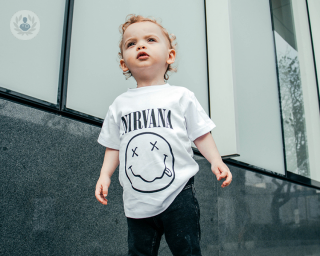

FAQs about ear pinning surgery
Por Professor Paul Chatrath
2024-11-22
Is it a major operation? Is there an ideal age for surgery? How can I refer my child for ear pinning surgery? And how much does it cost? We put your most common questions about ear pinning surgery to Mr Paul Chatrath , a distinguished London ear, nose and throat surgeon, specialising in rhinology and facial plastic surgery. Ver más


Otoplasty: a step-by-step guide to the procedure
Por Mr Anil Joshi
2024-11-21
Surgery to get your ears pinned back has evolved in recent years, and it’s now possible to reshape the ears without cutting the cartilage entirely. In this article, consultant ENT and facial plastic surgeon Mr Anil Joshi explains how modern surgeons approach ear surgery and what kind of recovery patients can expect. Ver más
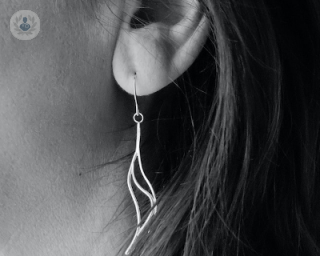

Pinnaplasty: A procedure to correct prominent ears
Por Mr Anil Joshi
2024-11-19
Revered consultant ENT and facial plastic surgeon Mr Anil Joshi gives an expert guide to what is involved in pinnaplasty procedures in this informative article for patients. Ver más


Getting your ears pinned back – how does it work?
Por Mr Raj Lakhani
2024-11-15
The ears, as with any facial feature, come in all shapes and sizes and for some they can appear as very prominent or protruding. Some people will choose to have surgery to create natural-looking ears. This procedure is called an otoplasty, which Mr Raj Lakhani, a top ENT surgeon, is an expert in. Here he explains what an otoplasty is, how it is performed and the risks involved. Ver más
Doctores expertos en Pinnaplastia
-
Professor Paul Chatrath
OtorrinolaringologíaExperto en:
- Septoplastia
- Amigdalitis
- Pinnaplastia
- Rinitis
- Sinusitis
- Septorrinoplastia
-
Mr Abbad Toma
OtorrinolaringologíaExperto en:
- Cirugía Endoscópica Nasosinusal
- Rinología
- Rinoplastia
- Pinnaplastia
- Rinitis
- Septoplastia
-
Mr Timothy Mellor
Cirugía plástica, estética y reparadoraExperto en:
- Blefaroplastia
- Brow lift
- Cáncer de piel en la cara
- Lifting facial
- Cirugía plástica facial
- Pinnaplastia
-
Professor Kayvan Shokrollahi
Cirugía plástica, estética y reparadoraExperto en:
- Láser
- Lesiones de la piel
- Nevus o lunares
- Pinnaplastia
- Carcinoma de células basales
- Cáncer de piel
-
Mr Kwamena Amonoo-Kuofi
OtorrinolaringologíaExperto en:
- Apnea obstructiva del sueño
- Amigdalitis
- Sinusitis
- Mareos
- Otitis media mucoide
- Pinnaplastia
- Ver todos

New Victoria Hospital
New Victoria Hospital
184 Coombe Lane West, Kingston upon Thames, KT2 7EG
No existe teléfono en el centro.
Si haces uso de este teléfono facilitado por TOP DOCTORS nos autorizas al tratamiento de tu teléfono para fines estadísticos y comerciales. Para más información, lee nuestra Política de Privacidad
Top Doctors

The Outpatients and Diagnostic Centre at 30 Devonshire Street (HCA)
The Outpatients and Diagnostic Centre at 30 Devonshire Street (HCA)
30 Devonshire St, London W1G 6PU
No existe teléfono en el centro.
Si haces uso de este teléfono facilitado por TOP DOCTORS nos autorizas al tratamiento de tu teléfono para fines estadísticos y comerciales. Para más información, lee nuestra Política de Privacidad
Top Doctors

Specialists in Plastic Surgery
Specialists in Plastic Surgery
5 Devonshire Place
No existe teléfono en el centro.
Si haces uso de este teléfono facilitado por TOP DOCTORS nos autorizas al tratamiento de tu teléfono para fines estadísticos y comerciales. Para más información, lee nuestra Política de Privacidad
Top Doctors
-
New Victoria Hospital
184 Coombe Lane West, Kingston upon Thames, KT2 7EG, South LondonExperto en:
- Cardiología
- Cirugía General
- Cirugía ortopédica
- Cirugía plástica
- El manejo del dolor
- Espina
-
The Outpatients and Diagnostic Centre at 30 Devonshire Street (HCA)
30 Devonshire St, London W1G 6PU, Central LondonExperto en:
- Cirugía ortopédica
- Cirugía ortopédica espinal
- Dolor musculoesquelético
- Ecografía musculoesquelética
- Estenosis espinal
- Inyecciones espinales
-
Specialists in Plastic Surgery
5 Devonshire Place, W1G Marylebone LondonExperto en:
- Abdominoplastia
- Blefaroplastia
- Cirugía plástica
- Estiramiento facial
- Liposuccion
- Reducción de busto
